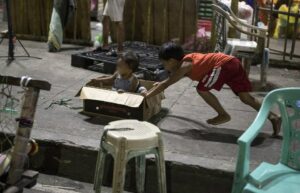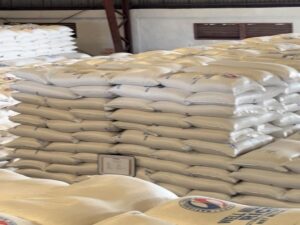
The Philippine Statistics Authority (PSA) has reported a decrease in the number of Filipinos living in poverty in 2023 compared to previous years. According to preliminary results from the PSA’s Family Income and Expenditure Survey (FIES), there were 17.54 million poor Filipinos in 2023, equating to a poverty incidence of 15.5%. This is a notable drop from the 19.99 million poor Filipinos in 2021, when the poverty incidence was 18.1%, and from 2018’s figure of 17.67 million with a poverty incidence rate of 16.7%.
The PSA attributes this decline to a 17.9% increase in the mean per capita income, which rose to P85,290. This increase outpaced the 15.3% rise in the poverty threshold, which reached P33,296. The most significant income growth was observed in the first decile class, which saw a 25.3% increase to P24,954. The second and third decile classes also experienced substantial income growth, rising 22.9% to P36,716 and 22.2% to P45,596, respectively.
In terms of families, the number of poor families dropped to 3.00 million in 2023, with a poverty incidence rate of 10.9%. This is down from 3.50 million families in 2021, which had a poverty incidence rate of 13.2%, and from 2018’s figure of 17.67 million families with a poverty incidence rate of 16.7%.
“The observed decline in poverty incidence from 2021 can be explained by the changes in the poverty threshold and income data from 2021 to 2023,” the PSA noted.
The FIES data was collected in two phases: July 2023, based on income data from January to June 2023, and January 2024, based on income data from July to December 2023.
The National Economic and Development Authority (NEDA) highlighted that these figures not only indicate progress but also surpass the government’s target of 16.0% to 16.4% for 2023 as set out in the Philippine Development Plan 2023-2028.
“These encouraging figures underscore our unwavering commitment to implement effective policies and initiatives that uplift the lives of our countrymen,” said NEDA Secretary Arsenio Balisacan. “As we welcome news of our progress, we remain steadfast in our efforts to ensure that our economic gains are truly felt by all Filipinos, rich and poor alike.”
Balisacan acknowledged that high inflation, averaging 3.5% in the first half of the year, may have partially mitigated the progress in poverty reduction. “The decline in poverty could have been sharper had inflation been more moderate. But what is perhaps most encouraging to see is that mean per capita incomes for the poorest Filipinos — those belonging to the bottom deciles — grew quite fast, faster than those in the top decile classes and faster than the rate at which the poverty threshold grew,” he said. He emphasized that economic growth has been progressive but stressed that food security and agricultural productivity remain top government priorities.
According to an OCTA Research survey, 42% of Filipino families, or about 11 million, considered themselves poor in the first quarter, down from 11.9 million families in the fourth quarter of 2023. A separate survey by Social Weather Stations (SWS) found that 46% of Filipino families considered themselves poor, with 33% identifying as food-poor.





















Comments are closed for this article!